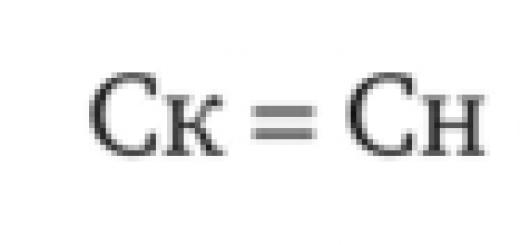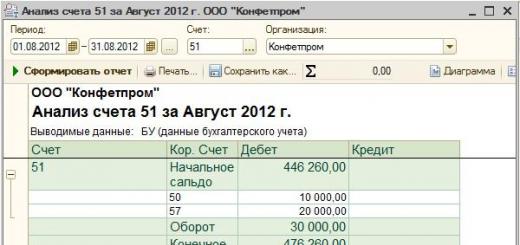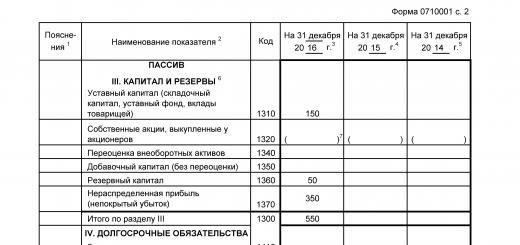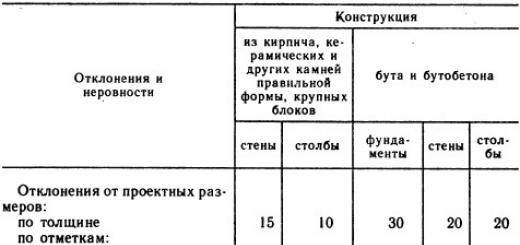
- Consider the role of the state in the country's economy
- Get to know the tax system

Analyze the types of resources using the table.
hired worker
Entrepreneurial ability
locomotive driver
Making decisions
mountain river

- 1. Functions of the state.
- 2. Why does the economy need a state
- 3. Why do we pay taxes
- 4.The state budget

State functions
What economic functions of the state exist according to A. Smith?
Page 132 (1 paragraph) textbooks

- economic stabilization
- protection of property rights
- regulation of money circulation
- redistribution of income
- regulation of relations between employers and employees
- control over foreign economic activity
- creation of public goods

Direct and indirect impact of the state on the economy
direct
regulation
Includes predominantly administrative methods (laws, government orders, development of the public sector in the economy)
indirect
regulation
Uses methods of monetary and fiscal policy

Compulsory payments levied by the state from individuals and legal entities to state and local budgets.
Tax functions:
- fiscal (the revenue part of the budget is formed)
- regulatory (stimulating or curbing the pace of production)
- distribution (distribution of production results between various areas and groups of the population)


- taxes
Direct (imposed directly on consumers)
Indirect (taxes on the sale of goods and services)
Income tax
customs duty
Excise taxes (surcharges)
Property tax
income tax
sales tax

vocabulary work
Direct taxes - These are payments to the state, depending on the size of their income or the value of property. Indirect taxes - These are payments to the state, collected only when certain actions are carried out, for example, when buying certain goods.
excise tax - this is a tax paid on the purchase of certain goods, which is set as a percentage of the price of the goods.
duties- These are payments for the right to provide or use certain services.

TAXES
Provide distribution and
redistribution of national income in accordance with social and economic objectives.
REGIONAL
(taxes of subjects of the Russian Federation)
Federal

Homework:
Paragraph § 17, learn the concepts, write out the definition of the state budget, list the income and expenses of the state.
1 slide
The role of the state in the economy. (Workshop). The objectives of the lesson: to consolidate the studied theoretical material on this topic through the solution of practical tasks.

2 slide

3 slide
1. Warm-up on terms: - Economy - Economic system - Taxes - Excise - Social politics

4 slide
Answers Economy is a rationally organized activity of large groups of people who enter into relations of production, consumption, distribution of the exchange of goods and services. An economic system is a form of organization of the economic life of a society, characterized by a certain type of ownership. Taxes are payments levied by the state from individuals and legal entities. An excise is a type of indirect tax paid on the purchase of certain goods, which is set as a percentage of the price of the goods.

5 slide
Social policy is a set of measures taken by the government in the social sphere.

6 slide
What type economic system, in your opinion, is considered the most progressive? Question for students.

7 slide
2. Work with the source. Task: Analyze the following situations and explain what type of economic system they characterize

8 slide
A. “... In order to close any loophole through which products could escape state control, in March 1933, a decree was issued in the USSR according to which, until the district fulfills the plan for grain procurement, 90% of the milled grain was given to the state, and the remaining 10% was distributed among the collective farmers as an advance payment for work. The opening of collective farm markets ... depended on whether the collective farms of the region coped with the implementation of the plan ... The authorities announced the establishment of an exceptionally high monetary taxation of private peasants ... "B. "In October 1922, a new Land Code was adopted in our country, according to which the peasants received the right to freely leave the rural community, to choose the forms of land use. Strict centralization in the supply of industrial enterprises with raw materials and in the distribution of finished products was abolished. The factories independently solved the issues of procurement of raw materials and the sale of finished products. V. “In national history, the end of the 20s is remarkable, when in June 1918 a decree was issued on the nationalization of large-scale industry, and in November 1920 - small industry. According to the decree of January 11, 1919, all surplus grain was confiscated from the peasants. Non-monetary settlements dominated everywhere. Payment for labor was carried out with food, basic necessities. In 1919, free meals were introduced for children, and later for industrial and transport workers.

9 slide
Ways of influence of the state on the economy. Tasks: explain which of the methods will be more successful in a particular situation and why? In connection with the increase in the price of bread, the inhabitants of the N-th region began to stock up on products "for the future." Such a boom in goods has led to a shortage of many products. Automotive companies in the country began to go bankrupt due to the fact that citizens buy only foreign cars, as they are cheaper and more practical to operate. In order to provide food and clothing to the low-income segments of the population, the disabled and pensioners, it is necessary to produce special goods for them, selling them at low prices. However, commodity producers are not interested in the production of such products. A certain pensioner Grigoriev took the land for farming, dug a pond on it and began to breed fish. The neighbor did not like this, and he came with a friend to someone else's pond and began to catch fish there with a rod. Grigoriev went home for a gun and threatened that he would kill him, that this pond was his property, to which the neighbor replied rudely. Then Grigoriev fired in desperation from two barrels and killed him ... ”(From the memoirs of A. Pristavkin.)

10 slide
Taxes. Levels A) federal B) regional C) local Types of taxes 1) housing maintenance tax 2) income tax 3) property tax Set the correspondence: A-2 B-3 C -1

11 slide
1. One of the functions of the state in the economy is: a) decides what and how to produce; b) not interfering in the economy; c) product exchange; d) solving social problems, helping the poor. . 2. Excise is a type of direct tax: a) yes; b) no 3. A sign of a command-administrative economic system is: a) strict state regulation of the economy; b) no exchange; c) the state interferes minimally in the economy; 4. The main functions of the state in a market economy include: a) establishing the required production volumes; b) regulating pricing; c) the distribution of profits by the enterprise; d) implementation of antimonopoly policy. 5. One of the ways the state influences the economy and population: a) persuasion b) punitive measures; c) no impact. 6. A sign of a market economic system is: a) the predominance of state ownership; b) central planning; c) centralized pricing; d) competition between producers. Taxed: a) pension b) scholarship c) unemployment benefit d) wage. 8. A sign of a traditional economy is the equalization of distribution: a) yes b) no

12 slide

Presentation on economics for grade 11 on the topic "The role of the state in the economy."
View document content
"Presentation "The role of the state in the economy""
Presentation of the teacher Vasyagina I.A.
MBOU secondary school "No. 24"

Weaknesses of the market economy
- Market monopolization
- Economic crises
- Unemployment
- Inflation
- Difficulties in creating public goods
- income inequality
- Occurrence of external effects
- Economic instability
- Economic crimes
- bankruptcy

The purpose of the state is the joint promotion
to a high quality of life.
Aristotle

At dawn economics A. Smith put forward the idea of non-intervention of the state in the economy. Indeed, the "mother" of wealth is nature, the "father" of wealth is labor.
And what about the state?
Your Topic Goes Here

The role of the state in the economy
State - economic entity which seeks to preserve the economic order of which it is itself the political expression.


State functions
1. Providing a legal framework:
- granting legal status to enterprises
- determination of property rights
- contract enforcement
- establishing "rules of the game" for the relationship of firms among themselves
- acting as an arbitrator

State functions
2. Correction of resource placement:
- creation of public goods
- government sector
- neutralization (elimination) of negative external effects

State functions
3. Protection of competition:
- enactment of antitrust laws
- regulation of prices and standards in natural monopolies with the help of public commissions
- application of financial sanctions

State functions
4. Stabilization of the economy:
- ensuring high employment
- fight against inflation
- stimulating economic growth
- assistance to the private sector in solving problems

State functions
5. Maintenance of internal order in the country
6. Ensuring the country's monetary system
7. Uniform tax policy
8. Application of the system of standards
9. Ensuring social protection of the population
10.Preserve and improve the environment
11. Realization of national interests


This presentation reveals the essence of the market, its types and functions. This topic is relevant, since the modern economy of developed countries is of a market nature. This economy is efficient now and will determine the economy of the future in all countries of the world.
The purpose of the presentation is to study the market, its essence, causes, main features, functions, types, as well as positive and negative aspects of the market mechanism.
The presentation can be used in a social studies lesson for accompanying the explanation of new material, primary consolidation of knowledge, generalization and systematization of knowledge.

*Conditions for the emergence and function of the market.
*Classification of markets.
*Main market factors and economic laws in force in the markets.

MARKET- these are all organizational, legal and material mechanisms and institutions that ensure the exchange of goods, everything that connects the seller and the buyer in their desire to increase their wealth. MARKET - a meeting place for sellers and buyers, where their interests collide



Market Basis




stimulating
Intermediary
informing
Market Functions
Regulatory
Pricing
Sanitizing


Market classification
Service Market
Innovation Market
Market
real estate
goods market

Investment market
capital market
Market
work force
land market

Credit market
Stocks and bods market
Market
information
funds market
production

By territorial
sign
National
regional

By degree of saturation
Excess market

According to the mechanism of operation
Free
Monopolized
adjustable
State regulated

From a legal point of view
illegal
legal


Ask
sentence
Main
market
factors
Competition
Price

- Law of value
- Law of supply and demand

The law of value is the economic law of commodity production, according to which the production and exchange of goods are carried out in accordance with the socially necessary expenditures of labor.
Price is the monetary expression of value. Cost is the cost expressed in money for the production and sale of goods.

The most important instrument of a market economy are demand And sentence.
Demand is those goods and services that the consumer has chosen to buy and is willing to buy at a certain price level.
The basis of demand-need.
Needs are those goods and services that people would like to have if they did not have to pay for them or for the purchase of which there would be enough money.
Demand - needs limited by the solvency of the buyer.
The law of demand states that as the price of a good rises, the demand for it will fall.
The price is a reference point for the producer and the consumer.

The price is a signal for the market.
Price
growing
Production
expands
Production
shrinking
Price
falls


Law of demand
The quantity demanded is inversely related to the price:
demand is lower
the price is higher
demand is higher
the price is lower


The offer is the amount of goods that the seller is willing to offer the buyer in a specific place and at a specific time.
The law of supply states that as the price of a commodity rises, the quantity supplied to the market will increase.




Law of supply
The value of the offer is directly dependent on the price:
sentence
the price is higher
sentence
the price is lower



Competition
Competition is the struggle between participants in the market economy for the most profitable terms production and marketing of goods.
Competition

Market advantages:
efficient allocation of resources;
adaptation to changing conditions;
freedom of choice and actions of producers and consumers;
maximum use of scientific and technological achievements;
satisfaction of various needs;
improving the quality of goods and services. .

Market Disadvantages:
does not contribute to the conservation of non-reproducible resources;
does not create incentives for the production of goods and services for collective use;
does not guarantee full employment and a stable price level;
gives rise to social injustice and the stratification of society into rich and poor.


The market is a sphere of free exchange of equivalent goods and
services.
The market emerges as a result
social division of labor.
conclusions
Demand is the goods and services that a consumer is willing to buy at a certain price level.
Demand is inversely related to the price of goods: higher price - lower demand.
The offer is the amount of goods that the seller is willing to offer the buyer.
The offer is directly dependent on the price: the higher the price - the more offer.
Market equilibrium occurs when demand equals supply.
slide 2
"To foresee is to control." Pascal Blaise
slide 3
Lesson plan
1. Economic functions of the state 2. Taxes, taxation, types of taxes 3. State budget 4. State debt
slide 4
The functions of the state in the economy
1. Development of economic legislation 2. Support for competition 3. Redistribution of costs 4. Provision of social guarantees 5. Regulation of the distribution of resources 6. Stabilization of the economy 7. Entrepreneurial activity (support) 8. Organization of money circulation 9. Support for the optimal level of employment 10. Implementation of national economic interests in the global economy
slide 5
Keynesianism
Keynes's theory is the theory of effective demand, with the active intervention of the state in economic life. Keynes's idea is that through activation and stimulation aggregate demand(general purchasing power) to influence the production and supply of goods and services. Keynesian theory gives crucial importance to investment.
slide 6
Monetarism
Monetarism is a school of economic thought that assigns a decisive role to money in the oscillatory movement of the economy. Monetary - means monetary (money - money, monetary - monetary). Representatives of this school see the main reason for the instability of the economy in the instability of monetary parameters.
Slide 7
taxes
Tax is a mandatory, individually gratuitous payment levied from organizations and individuals in the form of alienation of property, economic management or operational management belonging to them. Money for the purpose of financial support for the activities of the state and (or) municipalities.
Slide 8
Fees
Fee - a mandatory fee levied from organizations and individuals, the payment of which is one of the conditions for the commission of state bodies, local governments, other authorized bodies and officials of legally significant actions in relation to payers of fees, including the granting of certain rights or the issuance of permits (licenses) .
Slide 9
Characteristic features of the tax as a payment:
obligation; individual gratuitousness; alienation of funds belonging to organizations and individuals on the right of ownership, economic management or operational management; focus on financing the activities of the state or municipalities.
Slide 10
Characteristic features of the collection as a contribution:
obligation; one of the conditions for the commission of legally significant actions by state and other bodies in the interests of payers of fees.
slide 11
Tax functions:
fiscal function, which is to provide the state with the financial resources necessary for the implementation of its activities (a source of state revenue); regulatory function, thanks to which taxes either stimulate or restrain this or that economic activity (regulator of the economic system).
slide 12
Types of taxes by the nature of taxation:
proportional (the share of tax in income, or the average tax rate with income growth); progressive (the share of tax in income increases with income growth); regressive (the share of tax in income falls with increasing income).
slide 13
Types of taxes on the object:
direct; indirect.
Slide 14
Types of taxes by subject:
central, local.
slide 15
Types of taxes according to the principle of intended use:
marked; unmarked.
slide 16
Marked taxes
Marking is the linking of a tax with a specific direction of spending funds. If the tax has a target character and the corresponding revenues are not used for any other purpose, except for the one for which it was introduced, then such a tax is called marked. Examples of labeled taxes would be payments to Pension Fund, mandatory fund health insurance, to the road fund, etc. All other taxes are considered unmarked. The advantage of unmarked taxes is that they provide flexibility in budgetary policy - they can be spent at the discretion of the state body in those areas that it considers necessary.
Slide 18
The state budget
from English. budget - a bag, a wallet is an estimate of the state's income and expenditure for a certain period of time, compiled with an indication of the sources of government revenue and directions, channels for spending money.
Slide 19
State debt
total amount obligations of the state for issued and outstanding government loans, received loans and interest on them, issued by the state guarantees.
View all slides










